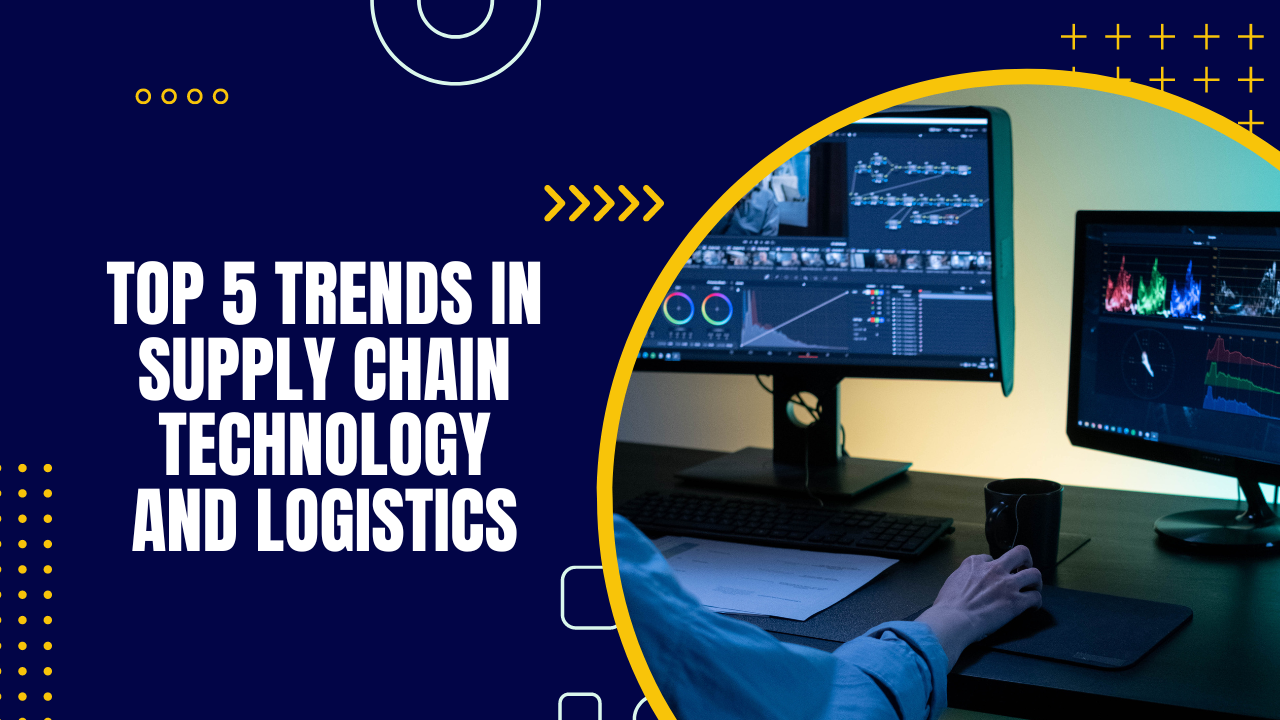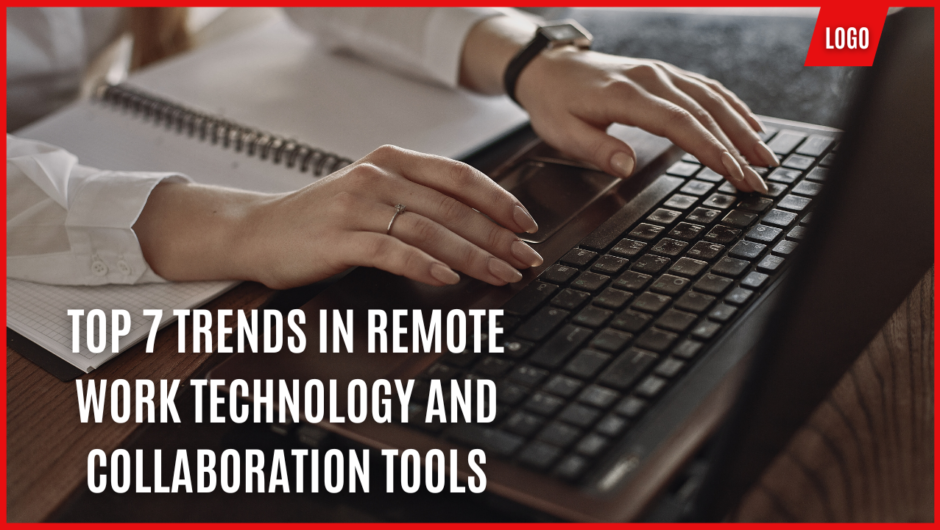Supply chain technology and logistics are undergoing rapid transformation, driven by advancements in digitalization, automation, and data analytics. These trends are reshaping how goods are sourced, produced, and delivered, optimizing efficiency, transparency, and responsiveness across the supply chain. From predictive analytics and artificial intelligence to blockchain and the Internet of Things (IoT), innovative technologies are revolutionizing inventory management, transportation logistics, and last-mile delivery. This introduction explores the latest trends in supply chain technology and logistics, highlighting their impact on businesses, consumers, and the global economy, and paving the way for a more connected, resilient, and agile supply chain ecosystem.

Top 5 Trends in Supply Chain Technology and Logistics are:
Digital Twins
Digital twins are virtual replicas of physical assets, processes, or systems that enable real-time monitoring, analysis, and simulation in a virtual environment. This technology leverages data from sensors, IoT devices, and other sources to create digital representations that mirror their physical counterparts. Digital twins offer numerous benefits across various industries, including manufacturing, healthcare, transportation, and urban planning.
In manufacturing, digital twins allow organizations to optimize production processes, predict equipment failures, and improve product quality through simulations and predictive analytics. In healthcare, digital twins of patients can facilitate personalized treatment plans and predictive diagnostics based on individual health data. Digital twins play a crucial role in asset management and maintenance, enabling proactive maintenance strategies and reducing downtime by identifying potential issues before they occur. In transportation and urban planning, digital twins help optimize traffic flow, improve public transportation systems, and enhance city infrastructure planning. Technology continues to advance, the adoption of digital twins is expected to grow, revolutionizing how industries manage and optimize their assets and processes.
Blockchain Technology
Blockchain technology is a decentralized, distributed ledger system that securely records transactions across multiple computers in a network. Each transaction, or block, is cryptographically linked to the previous one, forming a chain of blocks, hence the name blockchain. This technology enables transparent, tamper-proof, and immutable record-keeping, making it particularly suitable for financial transactions, supply chain management, and various other applications.
One of the key features of blockchain is its ability to eliminate the need for intermediaries, such as banks or financial institutions, by enabling peer-to-peer transactions. This reduces transaction costs, speeds up settlement times, and enhances security and privacy. Blockchain technology has gained widespread attention for its potential to revolutionize industries beyond finance. In supply chain management, blockchain enables end-to-end traceability of products, ensuring authenticity and transparency throughout the supply chain. In healthcare, blockchain can securely store and share patient records, enabling interoperability and improving data integrity.
Internet of Things (IoT)
The Internet of Things (IoT) refers to a network of interconnected devices, sensors, and objects that collect and exchange data over the internet. These devices, which can range from smartphones and wearables to home appliances and industrial machines. That are equipped with sensors and embedded systems that enable them to communicate and interact with each other autonomously.
IoT technology has revolutionized various industries by enabling real-time monitoring, automation, and optimization of processes. In healthcare, IoT devices can track patients’ vital signs remotely monitor medication adherence and enable telemedicine services. In agriculture, IoT sensors can monitor soil moisture levels, temperature, and crop health, enabling precision farming and resource optimization. The proliferation of IoT devices also raises concerns about data privacy, security, and interoperability. As more devices become connected to the internet, there is a growing need for robust cybersecurity measures and standardized communication protocols to ensure the integrity and security of IoT ecosystems.
Overall, IoT technology has the potential to transform industries, improve efficiency, and enhance quality of life. But it also presents challenges that must be addressed to realize its full potential in a connected world.
Autonomous Vehicles and Drones
Autonomous vehicles and drones represent groundbreaking advancements in transportation and aerial technology. Reshaping industries and revolutionizing how goods and people are transported. Its ranging from self-driving cars to trucks and buses. It utilizes a combination of sensors, cameras, and artificial intelligence algorithms to navigate roads safely and efficiently. With the potential to reduce accidents and traffic congestion while offering greater mobility for individuals with disabilities or limited access to transportation.
Similarly, drones, or unmanned aerial vehicles (UAVs), have rapidly gained popularity across various sectors, including agriculture, construction, delivery services, and surveillance. Equipped with cameras, sensors, and GPS navigation systems, drones can perform a wide range of tasks. Such as aerial mapping, crop monitoring, infrastructure inspection, and package delivery. Increased speed, accuracy, and cost-effectiveness compared to traditional methods. The widespread adoption of autonomous vehicles and drones also raises concerns regarding safety, privacy, and regulatory challenges. Ensuring the reliability and security of autonomous systems, developing comprehensive regulations and standards. Addressing public acceptance are critical factors in realizing the full potential of these technologies while mitigating potential risks.
Sustainability and Green Logistics
Sustainability and green logistics are increasingly becoming focal points in the transportation and logistics industry. As concerns over environmental degradation and climate change mount. Green logistics refers to the implementation of sustainable practices and technologies throughout the supply chain to minimize the environmental impact of transportation and distribution activities.
One key aspect of green logistics is the adoption of alternative fuels and energy-efficient vehicles, such as electric trucks and hybrid delivery vans. To reduce greenhouse gas emissions and air pollution. Additionally, optimizing transportation routes and implementing strategies like consolidated shipments and last-mile delivery solutions help minimize fuel consumption and vehicle emissions. Sustainability initiatives in logistics extend beyond transportation to include warehouse operations, inventory management, and supply chain transparency. Embracing technologies like IoT sensors, data analytics, and blockchain enables better resource utilization, waste reduction, and traceability throughout the supply chain.
Overall, integrating sustainability and green logistics principles into transportation and logistics operations. It is not only reducing environmental impact but also enhances operational efficiency. Reduces costs and fosters a positive brand image, making it a win-win for businesses, consumers, and the planet.
Conclusion
In conclusion, the trends in supply chain technology and logistics are reshaping the landscape of modern commerce, offering innovative solutions to age-old challenges. From the adoption of automation and artificial intelligence to the implementation of sustainability practices and digitalization. These trends are driving efficiency, transparency, and resilience throughout the supply chain. Embracing these advancements enables businesses to stay competitive, adapt to evolving consumer demands, and navigate global complexities. As technology continues to evolve and disrupt traditional paradigms, collaboration, agility, and a forward-thinking mindset will be essential for organizations to thrive in the dynamic and interconnected world of supply chain management.
Also Read:
- What is Dividend Investing and How to find Dividend Stocks?
- How do new mobile banking apps help access savings account better?
- Financial Advisor in India – The Best for your Financial Planning?
- What is inflation and how it impacts your financial plan?

Hello, I am Tanisha Kriplani, graduated in computer science from Delhi University. I am passionate about web content writing and have a strong interest in Data Analytics and Data Engineering.












